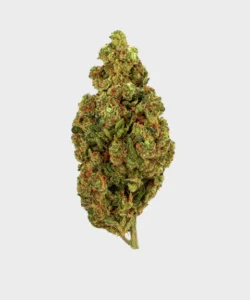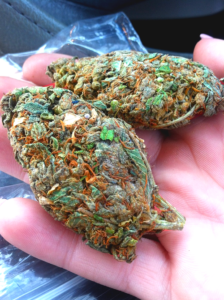
Introduction Weed in Sarat ‘Abidah
Cannabis — commonly referred to as weed, marijuana, or ganja — is a plant with a long and complex history around the world. While its use, legality, and public perception vary dramatically depending on the country and culture, the topic of cannabis is almost universal in sparking debates about morality, health, economy, and legality. Weed in Sarat ‘Abidah
In this article, we focus specifically on Sarat ’Abidah, a governorate in the Asir Province of southwestern Saudi Arabia. We explore what weed means in the context of Sarat ’Abidah, how it is perceived socially and culturally, what legal frameworks surround it, and why this topic is relevant in a region where modern dynamics are melding with tradition.
Background: What Is Sarat ’Abidah? Weed in Sarat ‘Abidah
Before diving into the topic of weed, it’s helpful to understand Sarat ’Abidah.
- Location & Geography: Sarat ’Abidah (sometimes spelled “Sarat Abidah”) is a governorate in the Asir Province of Saudi Arabia. (Wikipedia)
- Population & Area: According to Wikipedia, Sarat Abidah covers around 450 km², includes over 273 villages, and is characterized by mountainous terrain.
Sarat ’Abidah is not a global hotspot often associated with cannabis culture, but like many regions, it faces the complex interplay of tradition, law, and modern drug discourse.
Cannabis: Global & Regional Context Weed in Sarat ‘Abidah
Global Overview of Cannabis
Cannabis is a genus of flowering plants that has been used for medicinal, recreational, and industrial purposes for millennia. The psychoactive compound THC (tetrahydrocannabinol) is primarily responsible for its “high,” while CBD (cannabidiol) is prized for therapeutic uses without strong psychoactive effects.
Globally, attitudes toward cannabis vary:
- In many Western countries (e.g., Canada, some U.S. states), cannabis has been legalized or decriminalized.
- In other parts of the world, including much of the Middle East, cannabis remains strictly regulated or prohibited.
Cannabis in the Middle East & Saudi Arabia
In Saudi Arabia, drug laws are very strict. The country enforces harsh penalties for the possession, distribution, or use of controlled substances, including cannabis.
While precise data on cannabis use in remote provinces like Asir (where Sarat ’Abidah lies) is difficult to come by, the broader legal and social environment in Saudi Arabia is not permissive.
Weed in Sarat ’Abidah: Myth, Reality, and Public Perception
Is Cannabis Common in Sarat ’Abidah?
Social and Cultural Attitudes
- Religious Framework: In Saudi Arabia, Islamic principles strongly shape social norms. Many religious authorities condemn intoxicants, and cannabis is often morally disapproved of in conservative settings.
- Stigma: Given the legal risk and social taboo, cannabis users in such regions may operate in secrecy, reducing visibility.
- Youth & Globalization: One possible driver of change might be globalization and the influence of foreign media, but clear evidence for a cannabis subculture in Sarat ’Abidah is lacking.
Legal Status of Cannabis in Saudi Arabia
To understand the context of “weed in Sarat ’Abidah,” one must take into account the national legal framework.
- Saudi Arabia strictly prohibits the possession, sale, and use of cannabis and other controlled substances.
- Offenders may face severe punishments under Saudi drug laws, including prison sentences, fines, and potentially corporal or capital punishment in extreme cases (depending on the offense).
- The country does not have a legal medical cannabis program similar to those in some Western nations.
Because of these harsh legal realities, any cannabis activity in Sarat ’Abidah would be illicit and risky.
Health, Risks, and Consequences
Health Effects of Cannabis
Cannabis use comes with a variety of potential health effects:
- Short-term: Impaired memory, altered judgment, anxiety or paranoia, and in some cases, psychotic episodes (especially for new users or those with underlying mental health issues).
- Long-term: Potential dependence, cognitive impacts, respiratory issues (if smoked), and possible exacerbation of mental health disorders.
Risks in a Conservative Context
In a place like Sarat ’Abidah, health risks are compounded by:
- Legal Risk: Seeking help for cannabis-related problems might be complicated by the fear of legal consequences.
- Lack of Harm Reduction: Without legal frameworks, there might be limited access to education, safer usage information, or treatment support.
- Underground Market: Cannabis in illegal markets may be adulterated or contaminated, raising additional health risks.
Why Talk About Weed in Sarat ’Abidah?
You might wonder: Why is it important to write about cannabis in a relatively remote, conservative region like Sarat ’Abidah? There are several reasons:
- Emerging Global Trends: As global attitudes shift (with more countries legalizing cannabis for medical or recreational use), it’s valuable to consider how these changes could influence more conservative regions.
- Public Health: Even if use is limited, public health discourse should account for substance use, including education, prevention, and treatment.
- Sociological Insight: Examining how cannabis intersects with tradition, religion, and law gives insight into broader social dynamics.
- Policy Considerations: While legalization may seem unlikely in some places, discussions about decriminalization, medical use, or reform can begin with well-informed debate.
Historical & Anthropological Lens
While specific historical records about cannabis in Sarat ’Abidah are scarce, placing the region in a broader historical and anthropological context helps:
- Tribal Heritage: The “Abidah” in Sarat ’Abidah refers to a tribal lineage (Abidah tribe) rooted in the region.
Comparative Case: Cannabis in Muslim-Majority Contexts
To better understand “weed in Sarat ’Abidah,” it’s useful to look at the broader picture:
- Medical Cannabis Debate in Islam: Islamic scholars have debated the use of cannabis for medical purposes. For instance, a study from a Muslim-majority country (Malaysia) discussed cannabis in terms of maslahah (benefit) and mafsadah (harm) under Islamic law.
Challenges in Research & Data Weed in Sarat ‘Abidah
One of the greatest challenges in discussing “weed in Sarat ’Abidah” is data scarcity:
- No Local Surveys: There appear to be no publicly available epidemiological surveys measuring cannabis use specifically in Sarat ’Abidah.
- Underreporting: Due to legal risk, any cannabis use is likely underreported in official channels.
- Lack of Media Coverage: Western media rarely covers small governorates in Saudi Arabia in the context of drug use, and local media may avoid such sensitive topics.
Potential Scenarios & Trends Weed in Sarat ‘Abidah
Even without strong data, we can hypothesize a few plausible scenarios for cannabis in Sarat ’Abidah:
- Minor Illicit Use: There could be a small, mostly hidden community using cannabis covertly, as is likely in many places with strict laws.
- Trafficking Route: Given the region’s geography and possible historical trade links, it could be a transit area for drugs — though this is speculative and not documented.
- No Significant Use: It’s entirely possible that cannabis is nearly nonexistent in the area due to legal and social deterrents.
- Future Change: Over time, as global norms evolve, there could be pressure (though likely minimal in the Saudi context) for reform, or at least for public health discussions around drug use.
Ethical and Public Health Considerations
From a public health and ethics standpoint, discussing weed in Sarat ’Abidah raises several important points:
- Harm Reduction: Even in strict legal environments, harm reduction strategies (education, safe-use information, medical support) are valuable.
- Stigma: Reducing stigma around substance use makes it easier for people to seek help.
- Policy Reform: While legalization may be politically unlikely, moderated reform (e.g., decriminalization, medical use) could be worth exploring in public health forums.
- Community Engagement: Local religious and community leaders have a crucial role in shaping discourse and potential interventions.
FAQs Weed in Sarat ‘Abidah
Q1: Is cannabis legal in Sarat ’Abidah or Asir Province?
A1: No. Cannabis (weed) is illegal in Saudi Arabia, including Sarat ’Abidah. Possession, use, or trafficking can lead to severe legal consequences.
Q2: Are there any medical cannabis programs in Saudi Arabia?
A2: As of now, there is no widely recognized medical cannabis program in Saudi Arabia. The country maintains strict drug control laws.
Q3: Do people in Sarat ’Abidah use cannabis?
A3: There is no reliable public data confirming widespread cannabis use in Sarat ’Abidah. Given legal risks and social stigma, any use is likely underground and underreported.
Q4: Why is it important to talk about cannabis in such a conservative region?
A4: Discussing cannabis is important for public health, policy debate, and understanding social dynamics. Even in strict legal environments, people may use substances, and it’s valuable to explore how society addresses risk, stigma, and harm.
Q5: Is there any historical link between Sarat ’Abidah and drug trade?
A5: Historically, Sarat ’Abidah was part of trade routes, but there is no documented evidence specifically linking it to large-scale cannabis trade.
Q6: How can public health approaches help in areas where cannabis is illegal?
A6: Approaches could include education (on risks), harm reduction (even if informal), anonymous support services, and community engagement to reduce stigma and provide assistance for those who use.
Conclusion
While weed in Sarat ’Abidah is not a widely documented or openly discussed phenomenon, it presents a compelling case study in how substance use intersects with traditional societies, strict legal systems, and evolving global norms. The lack of data does not mean absence — rather, it underscores the challenges of researching illicit activity in conservative regions.
Addressing such a topic calls for sensitivity, public health awareness, and a balanced understanding of the complex forces at play: tribal history, religious values, legal risk, and human behavior.
I have used Global Weedworld (Globalweedworld@galaxyhit.com) at least 4-10 times and every time it has been a top notch.
He is the best local plug you can find around. He is very pleasant, friendly and fast. He is a lifesaver.
He sells top shelf WEED and other stuffs at moderate prices. I will always recommend this guy when people ask me my ” go-to”.
All you have to do is follow his instructions.
Just send him an email and I bet you will come back for more once you finish with what you bought because his quality is amazing.
Also Contact him on his telegram link telegramhttps://t.me/GlobalweedWorld
⚠️ Know that he do not have telegram channels only the telegram link above

told me that he doesn’t accept cash and i thought he is one of those idiots who took advantages of people but i decided to give him a try by making the payment first using bitcoin, surprisingly he arrived within the time he promised me and i received what i ordered. thank you, Global weed world, whenever i return here you will always be my plug without doubt.
The strain was exactly what I was looking for. It had that perfect balance, and the high was smooth. Also, the packaging was discreet and professional. Really impressed
I’ve been buying online for a while, but this shop’s service and product quality set them apart.
Everything was fresh, potent, and the customer service is outstanding
My first purchase and I’m hooked.
Excellent product and the customer support was super helpful in answering all my questions. Highly recommend this site
From browsing to checkout, everything was seamless. Delivery was on time, and the product exceeded my expectations. I’ll be recommending this to my friends
I’ve been buying from a lot of different places, but this one stands out. The bud is top-notch, and the prices are reasonable.
Will be ordering again soon! Amazing experience! The product was exactly as described,
and the packaging was on point—safe and odor-free. Thank you!
Third order in a row — flawless. Told my friends — now they’re ordering too. This is how weed buying should be. Clean, easy, reliable.
Best decision I made all week. Real ones know. This site is fire. I don’t usually leave reviews, but this deserved one.
Delivery was crazy fast, and the product… This place is setting the bar for online weed shops. Keep doing what you’re doing. You’ve got a loyal customer for life.
I was worried about ordering online, but the packaging was perfect completely. You can tell they care about their customers. Fast replies and reliable support.